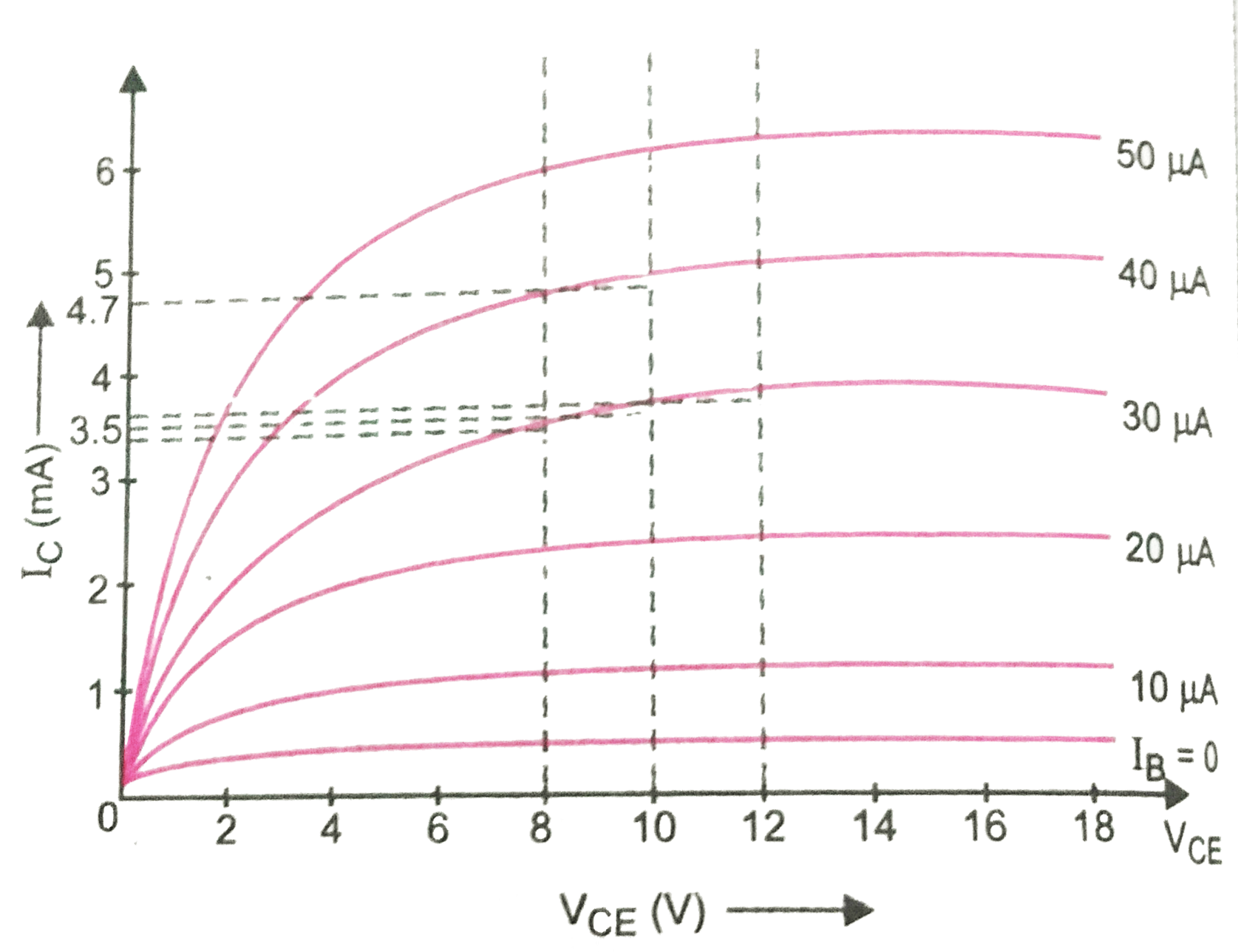A transistor oscillator is
(i) An amplifier with positive feedback
(ii) An amplifier with reduced gain
(iii) The one in which DC supply energy is converted into AC output energy. Then
All (i) , (ii) and (iii) are correct
(i) and (ii) are correct
(i) and (iii) are correct
(ii) and (iii) are correct
The correct Answer is:C
Step by step video, text & image solution for A transistor oscillator is (i) An amplifier with positive feedback (ii) An amplifier with reduced gain (iii) The one in which DC supply energy is converted into AC output energy. Then by Physics experts to help you in doubts & scoring excellent marks in Class 12 exams.
Updated on:21/07/2023Topper's Solved these Questions
Similar Questions
The overall gain of a multistage amplifier is 100. When negative feedback is applied,the gain reduces to 10.Find the fraction of the output that is feedback to the input
View SolutionWhen base current in a silicon transistor is changed by 12 μA the input resistance of the transistor is 650 ω when this transistor is uded as a CE amplifier with load resistance of 2 k ω calculate
(i) the current gain
(ii) transconductance
(iiii) voltage gain of the amplifer
View Solution
Knowledge Check
A transistor oscillator is
(i) An amplifier with positive feedback
(ii) An amplifier with reduced gain
(iii) The one in which DC supply energy is converted into AC output energy. ThenAonly (i) and (ii) are correctBonly (1) and (iii) are correctConly (ii) and (iii) are correctDall (i), (ii) and (iii) are correctAssertion : In an oscillator, the feedback is in the same phase which is called as positive feedback.
Reason: If the feedback voltage is in opposite phase, the gain is greater than one.AIf both assertion and reason are true and reason is the correct explanation of assertion.BIf both assertion and reason are true not but reason is not the correct explanation of assertion.CIf assertion is true but reason is falseDIf both assertion and reason are false.
In a negative feedback amplifier, the gain without feedback in 100, feed back ratio is 1/25 and input voltage is 50mV. Calculate
(i) gain with feedback
(ii) feedback factor
(iii) output voltage
(iv) feedback voltage
(v) new input voltage so that output voltage with feedback equals the output voltage without feedback.
View SolutionOutput characteristics of an n-p-n transistor in CE configuration is shown in the Fig. Determine

(i) dynamic output resistance (ii) dc current gain and (iii) ac current gain at an opererating point VCE=10V, when IB=30μA.
View SolutionDraw a circuit diagram of a transistor amplifier in CE configuration. Define the terms (i) Input resistance and (ii) Current amplification factor. How are these determined using input and output characteristics?
View SolutionA linear harmonic oscillator has a total mechanical energy of 200J. Potential energy of it at mean position is 50J. Find
(i) the maximum kinetic energy,
(ii)the minimum potential energy,
(iii) the potential energy at extreme positions.
View SolutionName the devices or machines which convert :
(i) Electrical energy into sound energy.
(ii) Heat energy into kinetic energy (or mechanical energy).
(iii) Chemical energy into kinetic energy (or mechnical energy).
(iv) Chemical energy into heat energy.
(v) Light energy into heat energy.
View SolutionThe amplitude of a simiple harmonic oscillator is tripled. How does this affect (i) the maximum velocity (ii) the total energy and (iii) the period of the oscillator?
View Solution